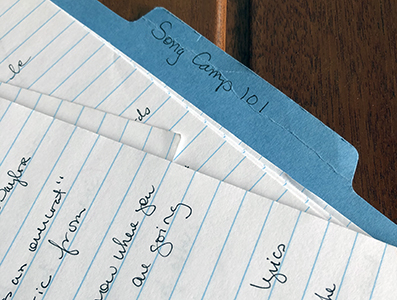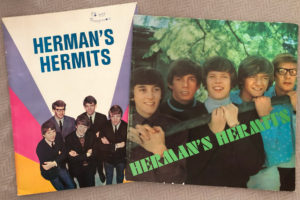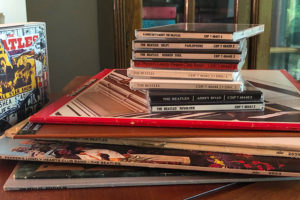When I arrived at NSAI Song Camp 101 I was eager to learn. I took pages and pages of notes. The following information from those notes captures tidbits of advice and inspiration from these wonderful teachers. Even though some of the information is specifically about songwriting, it also is helpful for anyone wanting to learn how to adapt a creative mindset.
Every song you write is a step to your next song.
— Steve Nelson, songwriter and teacher
NSAI Song Camp 101 Classes
Rick Beresford:
At the time, Rick taught commercial songwriting at Belmont University in Nashville. His songs have been recorded by such artists as George Jones, The Everly Brothers, BJ Thomas, and Brenda Lee.
His class each morning was a nuts and bolts lecture about how to write songs—including song forms and rhyme schemes. He also gave writing exercises to do every day. At the opening class on Sunday, he said, “We (songwriters) are the people who hear voices and see visions. What we have is special. We were born songwriters, not made. Ancient tribes would give those people a special place. Songwriting is a confidence game. No one can take success away from me except me. Trust the mysterious process.”
He encouraged us to read literature and fill our well with ideas and language. He posed the question, “What is art?” His answer: “It is the recasting of the everyday experience so the listener/viewer might glean new insight.” This is our magic. We have the ability to describe emotions and events for everyone else. Society could not move forward without songwriters—without art, poets, writers, etc. Art moves society forward.
What is a great song?
- entertainment is the number one job of a songwriter
- has universal emotions/story
- told in a unique way
- compelling emotion
- singable (range of about 10-11 notes)
- memorable lyric and melody
- sincere—strike an honest, true chord
Mary Gauthier:
Her album Mercy Now was voted in the TOP 10 of 2005 by listeners of WFUV in New York City. LA Times writer Randy Lewis said this about the album: “The Louisiana singer-songwriter’s major-label debut crackles with truths lifted with a surgeon’s precision from the struggles of real life. Following in the footsteps of John Prine, Gauthier exhibits a poet’s unflinching eye, a counselor’s compassionate heart and a trickster’s wry spirit.”
In this class, I found her utterly down to earth, practical, and inspirational. Mary told us about her story of addiction and when she was arrested for drunk driving in 1990. She attended the Cambridge School of Culinary Arts and opened a Cajun restaurant in Boston. After the arrest, she stopped drinking and decided to dedicate herself to full-time songwriting and a music career. She wrote her first song at age 35. One piece of her more memorable advice was, ”Just write the songs. Don’t listen to their fuckin’ rules.”
Another quote (which is my favorite): “I want to make people feel. The best times are when we feel.”
I remember many years when I did not really feel anything. I don’t remember very much from those years. Perhaps there is not much to remember except for a dull ache. It is true that living is about feeling.
Steve Nelson:
Steve’s songs have been recorded by Barbra Streisand, Guy Clark, Dusty Springfield, Lynn Anderson, Samantha Sang, Paul Anka, and many other artists. He has also written music for the characters Big Bird and Winnie-the-Pooh, and was nominated for an Emmy Award for his work on “Sesame Street.”
He has a very sweet, gentle spirit—and great sense of humor. His first experience with the musicality of words was the first sentence of Dylan Thomas’ “A Child’s Christmas in Wales.” Several years before Steve’s class, I had heard about Thomas’ story and bought a book that contained it.
“One Christmas was so much like another, in those years around the sea-town corner now and out of all sound except the distant speaking of the voices I sometimes hear a moment before sleep, that I can never remember whether it snowed for six days and six nights when I was twelve or whether it snowed for twelve days and twelve nights when I was six.”
— Dylan Thomas (1914-1953) Welsh poet and writer
Steve said the songs that have become classics over the last twenty to forty years have similarities. They are based on symmetry and pattern. The best writers are the re-writers. Editing is important. Sometimes songs don’t end up where they started. They have a life of their own and the songwriter needs to follow that. Rewriting can be painful. Sometimes it is like renaming your eight-year-old child. The intangibles of songwriting are inspiration, imagination, and our unique perspective. These are not teachable. What we bring to a song is what makes our songs unique.
One of his influences was Guy Clark who had an economy of words, but the words have incredible weight. Steve studied with Paul Simon in New York. Paul influenced his ideas about the use of the sound of words. One of my favorite quotes of Steve’s is, “You are what you hear. You can’t write what you don’t know.”
Tim Johnson:
Tim’s songs have been recorded by Alan Jackson, George Strait, Diamond Rio, Kellie Pickler, and Collin Raye—to name a few.
One of his insights was that you will know when you have something special by the audience reaction. Only make demos of the songs that do well at writer’s nights. Also, if you write something great, the people will come to you. If you write a great song, great things will happen to it. Keep writing. Keep honing your skills. Stay connected to life. Concentrate on writing great songs.
Don Henry:
Don’s songs have been recorded by Ray Charles, Patti Page, Conway Twitty, Kathy Mattea, Blake Shelton, and Miranda Lambert—to name a few. His song ”Where’ve You Been,” which he co-wrote with Jon Vezner, won the Grammy Award for Best Country Song in 1990. The song was on Kathy Mattea’s 1989 album Willow in the Wind.
Don’s class was the last class on the final day. This was extremely fortunate. I was beginning to get a little discouraged—there’s just so much I learned that I needed to work on. He was very sweet and gentle and was genuinely helpful. He played a song and then asked for questions. Several people had questions. When there was a long silence, I jumped in. I explained a little about my background and asked him what would be most helpful for me to study. His suggestions were: use hard rhymes, practice writing all the time, study older songs—good songs, even simple songs, see what tools your favorite songs use. Study the classics. Very few people can write a good song that does not rhyme. Study the great songs that don’t rhyme (for example, “America” by Paul Simon). “The Dance” by Tony Arata is a lesson in perfection.
He talked directly to me for ten or fifteen minutes. We immediately had a rapport. I told him I had been looking at a certain popular country artist’s lyrics. Don said he is a good singer and a good guitarist, but not an example of good songwriting. An artist can sing any song they choose. Songwriters have a different mark to reach to get their songs sung by artists. That answered my questions.
After the session, everyone left, so I went up and spoke to Don. He asked me where I was from. I said Birmingham. He is from California and moved to Nashville in 1979. He said his wife is from Gadsden. Then, I told him I was born and lived in Gadsden until I went to college. He said, “I knew I liked the sound of your voice.”
NSAI Song Camp 101 Concerts

Sunday Night
Participants of NSAI Song Camp 101 had a choice of going to the bar and performing several songs or going to a large classroom and doing one song. I went to the classroom. Phil, one of the song camp facilitators, urged us to perform live, even if it was simply singing along with our CD. He was right—just the immediateness of music being made live is powerful. I decided that I would sing my best song, “Let’s Go Slow.” I was not too nervous–but I stared down at my music the whole time I sang. I know that I looked and sounded more like a classical performer. Debbie, a friend I met there, said everyone really liked my song and thought it was “wonderful.”
A guy came up to me afterwards and said it was beautiful. It reminded him of a film score. A day or so later another guy came up to me and said it reminded him of music used in the David Lynch films Lost Highway or Blue Velvet.
Monday Night
Concert in the Round at Douglas Corner Café. The performers were our teachers—Angela Kaset, Rick Beresford, Don Henry, Hugh Prestwood, Rob Crosby, and Tim Johnson. Mary Gauthier and three other people jumped in at various times. The next morning Rick told our class that concert was the best one ever—in the thirteen years of song camp. I agree, it was phenomenal. A friend and I were sitting just six feet away from the performers. I don’t think I can begin to describe this experience. It was so rich, so full of emotion. (That reminds me, in almost every class I teared up. Everything was moving and heartfelt—from what they were saying—to the songs the teachers performed during class.)
Tuesday Night
A friend I met at song camp and I went to the Bluebird Café. There were five performers that night. The two stand-outs were Justin Roth and Beth Wood. Both are singer-songwriters and excellent guitarists. They are very talented and their performances had lots of energy.
What I gained from all these concerts is a new pair of ears. After absorbing such wonderful music, my own music sounds very different to me. I can now more accurately judge and hear my music more critically. This was worth more than anything. These concerts taught me invaluable lessons and became the high-water mark for my life up until that point.
An NSAI Song Camp 101 Song Critique
In Angela Kaset’s class:
Angela Kaset is a songwriter and performer. Her songs have been recorded by such artists as Suzy Boggus, Wynonna Judd, Aaron Tippin and others. Her song, “Something in Red” was recorded by Lorrie Morgan. The song reached number 14 on the Billboard Hot Country Singles & Tracks chart. The song earned Morgan a nomination for the Grammy Award for Best Female Country Vocal Performance.
Angela critiqued my song, ”Let’s Go Slow.” Her first reactions to hearing my song: “Dreamy, mellow, unique, different, I liked it. It is Enya-esque. Maybe more poetic language could be used here.” She began reading the lyrics aloud. After the first verse she said, “I am getting hot.” At that moment I realized I was the only one who had written about this topic. Then I said to her, “and I’m a church musician.” She said, “Is your minister hot or something?”
I had written the song on a lark. It was about 10:30 one night and I was getting ready to wind down for the evening. I was listening to a Shania Twain CD. Her song, “You’ve Got a Way” inspired me to try to write on this topic. I figured I would just jump in and see what happened. And, that was the impetus for this song.
Summation
In all the NSAI Song Camp 101 classes the teachers talked about their journey as songwriters. They played some of their songs and described the inspiration for the song and how they had written them. They gave songwriting advice and tips about working in Nashville. Questions were encouraged.
There are many more details, but too many to relate them all. That song camp was pivotal in my songwriting journey. As a result, I learned that one of the main things about songwriters is their desire to communicate and to express the totality of human emotions. That is what I want to do, too. This desire to communicate is very powerful. It compelled me to go beyond my comfort zone and take this first huge step to learn about songwriting.










Leave a Reply
Your email is safe with us.